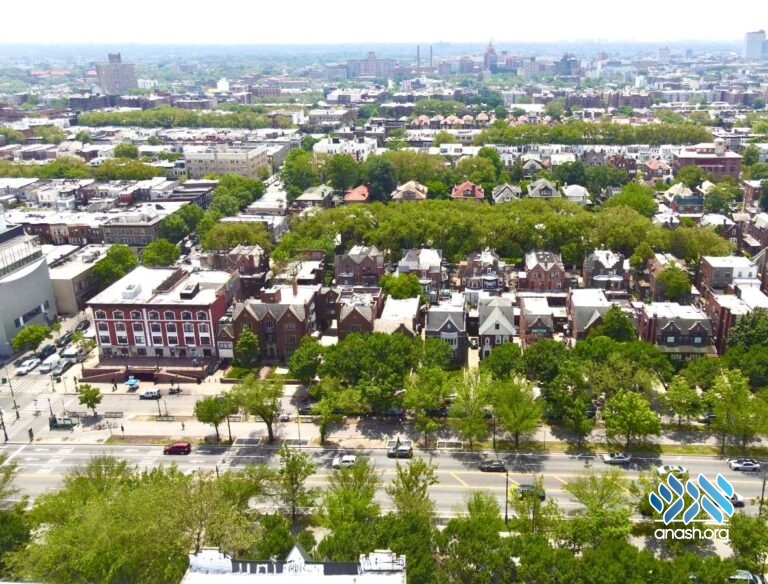כ״ד תמוז ה׳תשפ״ג | July 13, 2023
Eruv in New York and Other Large Cities
Ask the Rov: What are the issues with making an eruv in New York or other large city? Rabbi Chaim Hillel Raskin replies.

Ask the Rov: What are the issues with making an eruv in New York or other large city?
By Rabbi Chaim Hillel Raskin – Rov of Anash in Petach Tikvah
Halacha says that while a tzuras hapesach (“doorway” eruv) can enclose a karmelis, to permit a bona fide reshus harabim, it is necessary to have walls with doors at the entrance. While some consider any public street that is 16 amos wide (approx. 24 feet) to be a reshus harabim, halacha is lenient to only consider it a true reshus harabim if there are 600,000 people.1
Although earlier poskim — including the Alter Rebbe — use an expression that “nowadays we don’t have a complete reshus harabim,” the Rebbe – as well as various acharonim – note that it isn’t the case today when we clearly have cities with such a population, and they can therefore be considered a reshus harabim min hatorah.2
How are the 600,000 people calculated?
Although Halacha discusses a “reshus harabim” where 600,000 people pass daily, many rishonim specify a “city” with a population of 600,000 since the streets were made for that number of people who reside in the vicinity. Other rishonim add even those entering the city from elsewhere — as we find with Yerushalayim.3 Contiguous cities with a combined population of 600,000 is a debate among poskim.
From the Alter Rebbe it is understood that anyone who uses any of the public city streets or plazas — men, women and children, both Jewish and not — are combined to the count of 600,000 people, and all of the city streets become a reshus harabim (provided they are 16 amos and not roofed or enclosed with three walls). This is like the roads in the Jewish camp in the midbar, which were a reshus harabim although the 600,000 did not travel on one particular street.4
When the question arose about constructing an eruv in Manhattan and in Brooklyn in the 1950s, R. Moshe Feinstein ruled that they were reshus harabim, and it was accepted as final and binding.5 When some challenged that psak in 1979, many rabbonim, including Lubavitch rabbonim like R. Zalman Shimon Dvorkin, upheld R. Moshe’s psak, which had become the halachic standard in New York City.6
As the topic of eruvin is complex, it must be ruled on by a scrupulous rov who is thoroughly proficient in these halachos, particularly as ruled by the Alter Rebbe and Tzemach Tzedek who differ from poskim of other communities.7 In case of a question, the rov should follow the stricter opinion and not look for leniencies.8
See Sources (open PDF)
From The Weekly Farbrengen by Merkaz Anash


Why is the famous answer of the Rebbe not even mentioned?!
Which “famous answer” are you refering to?
מפורסמת דעתי שבדורנו זה איש או ארגון שמתחשבים אתו העושה עירוב ויודע שסוף סוף יתפרסם הדבר – הרי זה תקלה איומה, כי אי אפשר שלא יארע שבת קודש אחד והעירוב פסול – וע”פ טבע שיתרגלו פעמים אחדים בהוצאה בשבת
קודש לא תועיל כל הכרזה והודעה שהעירוב נפסל ואסור וכו’ שיפסיקו להוציא
ואין לעשות עירוב אלא בסודיות
That answer is relevant even for a medium sized town discussed in the last column. In a case where an eruv is halachically possible, the Rebbe held that it should not be made public due to the problems that can result.
This column is discussing a situation when an eruv is simply NOT POSSIBLE. If the area is a reshus horabbim min haTorah, then you need real walls, which obviously you don’t have. That is why the rabbonim say that “there is no eruv” since it is simply not valid!